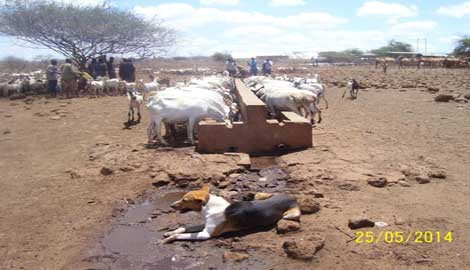×
The Standard e-Paper
Truth Without Fear
 |
| A guard dog keeps watch as his owner's goat enjoy a sip at a community borehore at Qubi Gallo village near Marsabit town |
It was supposed to be one of the biggest reservoirs in this parched part of the country. But all there is to show for the Badasa Dam project is a large uncompleted earthen embankment in Marsabit Forest.
There is also an unfinished concrete tower with the steel scaffolding still up, and scattered in the area are old tyres, rotting hardware and abandoned pieces of reinforcement steel that would bring pure joy to the face of a scrap metal dealer.